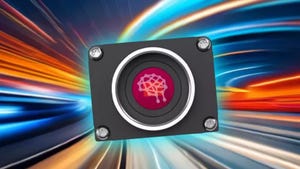Electric Taxi Uses Adhesive to Bond Frame to Body Panels
Lighter-weight structure boosts the vehicle’s all-electric range.
April 6, 2018

A new plug-in hybrid taxi is taking a page from the world of British sports-car technology by employing structural adhesives, rather than mechanical fasteners, to join its body and frame.
The London EV Company's new electric TX taxi uses an all-aluminum frame to cut weight by 30%, then fastens the frame to sheet-molded composite panels using a bonding adhesive. The company says that the new structure is pound-for-pound twice as strong as its previous cabs, which were made from mild steels. “Our technology is to bond the aluminum together using a hot-cure adhesive,” Chris Staunton, chief of structures for the London EV Company, states in a company video. “This means we reduce the number of fasteners. But at the same time, we improve the vehicle’s strength.”
|
The London EV Company's new electric TX taxi uses an all-aluminum frame to cut weight by 30%. It then fastens the frame to sheet-molded composite panels using a bonding adhesive. (Image source: Dow Automotive) |
The key to the lighter, stronger structure is its use of a composite bonding adhesive known as Betaforce from Dow Automotive Systems. Betaforce structural adhesive is an elastic two-part polyurethane-based material designed for multi-material bonding. For the taxi cab application, engineers are employing 3-mm bond depths to join the aluminum frame to the composite panels.
“Bonding creates a uniform strength and modulus, allowing lighter panels,” noted Richard Wollaston of Antala Ltd. UK in an e-mail to Design News. Antala, which specializes in industrial adhesives, guided the London EV Company through the application of the adhesives in the TX application.
Engineers said that the adhesive provides greater strength by virtue of its basic functionality. “We end up with joints that are cohesive and well connected across the whole of the joint, rather than at single points,” Staunton said.
The adhesive is applied to body panels in a fully robotic application. Adhesives for the door panel are installed manually.
Dow engineers said the technology has been used previously in British sports cars from Aston Martin Lagonda Ltd. and Lotus. The London Electric Vehicle Co. decided to use the technology because it was switching from gasoline-powered, steel vehicles to electrically powered, aluminum-bodied vehicles.
The company’s all-new TX is a plug-in vehicle with a small internal combustion engine. Using aluminum to cut weight by 30%, it offers 80 miles of pure electric range or 400 total miles of range with the hybrid package.
Engineers said that Betaforce was critical to the success of the design because it enabled them to join two dissimilar materials. The company has used the adhesive in the past to bond steel to aluminum, carbon fiber to steel, and sheet-molded compounds to aluminum.
“It would have been near impossible to clad the vehicle without an elastic product,” Wollaston said.
Read More Articles on Automotive Technology
12 Future Electric Crossovers to Watch
Innoviz Designed a Lidar to Make Any Car Autonomous
Are Small Displacement Turbo Engines Reliable in the Long Term?
Top 10 Most Reliable Car Models for 2018
Senior technical editor Chuck Murray has been writing about technology for 34 years. He joined Design News in 1987, and has covered electronics, automation, fluid power, and auto.
About the Author(s)
You May Also Like




